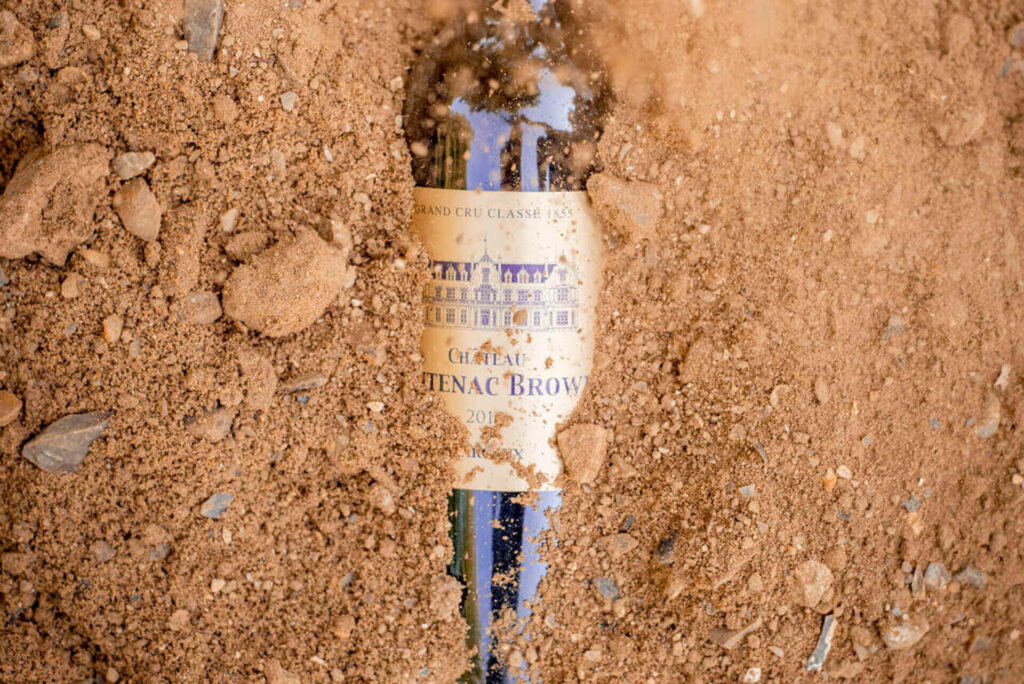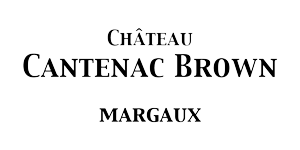Chateau Cantenac Brown, Grand Cru Classé from 1855, in Margaux was founded 200 years ago by a Scottish John Lewis Brown. Recognizable by its spectacular Tudor-style chateau, Cantenac Brown is still family owned today and has announced the construction of a new, unique winery made entirely of raw earth.
On the occasion of this article, we went to meet Philippe Madec: emblematic French architect and responsible for the construction of our new raw earth winery. In this interview, he comes back to the concept of eco-responsible architecture and its application to the construction of our new raw earth cellar.
What is your definition of eco-responsible architecture?
It is an architecture that respects the Earth and the people, does not harm them. It is a healthy architecture that uses natural resources frugally and does not implement polluting processes. We thus pay special attention to the earth and to people with the desire to spare both.
This is an evidence at the origin of the Happy and Creative Frugality movement of which I am one of the co-founders. Frugality means harvesting fruit. It is good when it does not harm the Earth and satisfies those who do.
To achieve this, designed in a bioclimatic way, architecture pays attention to the resources it uses and draws from the context in which it stands: earth, air, heat, water, wind, shadows, organic and geosourced materials. The objective is to take advantage of what nature brings us to limit the use of complex technologies.
Eco-responsible architecture is therefore low tech; that is, it uses simple technologies that consume little energy and generate few breakdowns.
In a way, can we say that eco-responsible architecture is a return to basics?
Yes, a return to one’s roots is not nostalgia. It is a way of rediscovering essential values while remaining in our time, in our modernity. The relationship to the climate determines human settlements. The way of living in a climate decides the form of architecture, using the resources of that place.
For example, in Brittany, vernacular architecture was made of granite for the walls and slate for the roofs. In the South of France, it was in limestone and tiles. However, in Brittany, slate can only be laid at 45° because of the wind, rain and the smooth surface of the slate that has been loosened. In the south, the roofs can be flatter because the tiles are longer, rougher and there is less rainfall.
Thus, the relationship to climate and natural resources is historical and foundational. When there is a natural resource, there is always the corresponding know-how. Local wealth is both physical and human.
Why work on the Château Cantenac Brown project?
The first meeting with Tristan Le Lous went very well. I immediately expressed sympathy for him thanks to one of his questions that I have only had twice in my life: “what did you not do in an eco-responsible way on this date that would be useful and conceivable to do here? Very quickly the zero cement and the compressed mud brick vault arrived.
Sometimes project owners come to us for the image that our workshop represents, more than our know-how. This is not the case here. Recently, however, private clients have been making very strict and sincere environmental demands; the Château Cantenac Brown project is an example of this. Something is happening today that brings the eco-responsible ambition to sharing.
The Château Cantenac Brown project is the first project in the world of wine to fall under the Bâtiment durable Nouvelle Aquitaine approach. Obtaining the regional label, which is very relevant, and the fact that this project is a pioneer, is very significant.

“What is completely spontaneous in man, touching the Earth, is an immediate affect of familiarity, sympathy, even veneration, almost subsidiary. Because it is the material par excellence”.
Francis Ponge
Cantenac Brown’s project is full of constraints, can you go back over them?
“Constraint” is a word I hate. Architects are given everything: the project, the program, the place, the rules, the budget, the trust. These are data, not constraints. Giving is not constraining! The fact that these data are specific is one of the great things about my job. Its richness lies in the possibility of working on subjects where the data is different. The data at Château Cantenac Brown is that of a historic and emblematic estate in the Bordeaux region and the program is not a constraint, it is an ambition. There are no constraints here, there is work. In this context there is freedom.
Until recently, when a winery asked architects to work, it was looking for an object with a “wow” effect. Breaking with this habit from another century, our first common, eco-responsible, frugal decision was to “use the existing buildings and extend them”. This first stance is a very strong factor that guides our decisions. Using existing buildings produces less waste, requires less energy and generates less pollution. The project is integrated in its context, inserted in its agricultural and built landscape, and in an already existing one. This posture spares the context in which it intervenes.
The existing is partially deconstructed and everything is done to use the recovered elements. Everything we add is eco-responsible, healthy, respectful. First of all earth: adobe wall, compressed earth brick vault, clay concrete floor, fibers: straw insulation, compressed wood straw, wood: structures, joinery, parquet. Concrete will not be poured: the foundation will be in steel screw piles.
In addition, natural light is very present. Wherever we can, natural air and light come in. The vat room is naturally ventilated and a climatic well cools the winery. This is achieved by passing air through the soil at a constant temperature (13 to 14°C). In this way, we use as little technology as possible.
This project and this architecture can be seen as an opposition to the ever more?
I’m not in opposition, I don’t have that time to waste. I am in another century. We can say that architecture was renewed with steel in the 19th century, and concrete in the 20th century. Today, architecture is being renewed with bio and geosourced materials. It hasn’t been that long since we lost the relationship with nature, it’s only since the first quarter of the 20th century. When you make generic buildings to be used all over the world: a concrete structure, covered with identical facades and with air conditioning, you refuse any relation to the context, to be nourished by it. So we had to reach this level of technological abstraction to lose and cut our relationship to the environmental conditions. But we live in environments.
I have published about fifteen books. The next one, entitled “Better with Less, Building for Peace”, reminds us that the current catastrophic state of the planet is the work of the builders. The world of builders has been under the radar of environmental criticism for too long. It took the HABITAT III summit in 2016 and the COP 24 in 2018 for the UN to finally realize that 40% of greenhouse gas emissions, 36% of final energy consumption are due to construction and building, and displacement 20%. Thus, the urban planner architect is responsible for 60% of the emissions. By way of comparison, flying is 2% of CO2 emissions. The manufacture of the bag of cement varies between 7 and 9% and millions or even billions of cubic meters of reinforced concrete are poured. Pouring one ton of reinforced concrete emits one ton of CO2.
With Happy and Creative Frugality we decided to stop participating in this degradation. It is a contemporary international movement. In order to achieve this we have to be smart and find solutions. You have to be creative to get out of the habits of the 20th.
This new winery is an expression of the power of the earth, central to the philosophy of Château Cantenac Brown…
Unlike cement, the earth is outside the industrial world, and its commercial dimension. It is not an industrialized product: it is a local product that can come from the land you are going to work. It is a resource that does not pollute in order to be extracted and used. It is the resource of tomorrow.
The major construction companies use formworks to pour reinforced concrete. They put steel-reinforced concrete, with portland cement, sand and water. We will continue to build and therefore we will need their know-how. The question is “what is being poured instead of concrete in the forms”? The answer is simple: poured earth.
Working with earth, and raw earth, means giving future possibilities to recent technologies by using resources that can be recycled infinitely. The day you have to destroy a wall of earth, it becomes earth again. Moreover, earth has very interesting hygrothermal, acoustic and sensual qualities. It regulates the hydric dimension of space but also the thermal dimension. It insulates, it takes the heat or gives it back.
The prowess of Château Cantenac Brown lies in the vault, made of compressed earth bricks, above the cellar. There are no vaults like this in the world. It is a real architectural challenge and an engineering feat. It will surely be the first to carry a roof. Our vault will carry a roof integrated into the whole Cantenac roof landscape.
Finally, we must not forget the tactile quality of the earth with a real softness and delicate beauty. We can see the gesture of the men and women who pee by hand on the wall.
I like to quote Ponge’s poem “The Earth”: “What is quite spontaneous in man, touching the Earth, is an immediate affect of familiarity, sympathy, even veneration, almost subsidiary. Because it is the material par excellence “.
When there is an attention paid to the Earth, and to the earth, we find it turned towards people. It is the question of the living that is at stake here.


